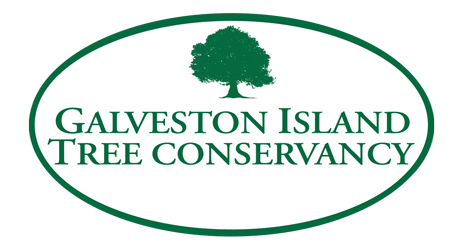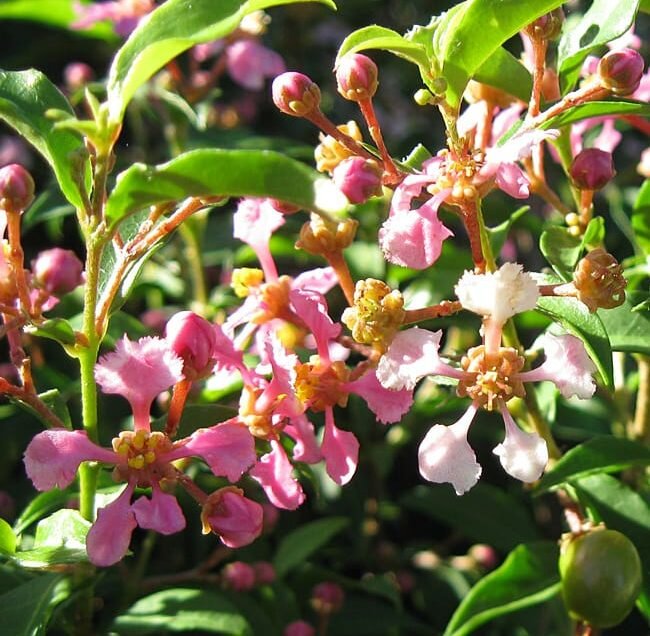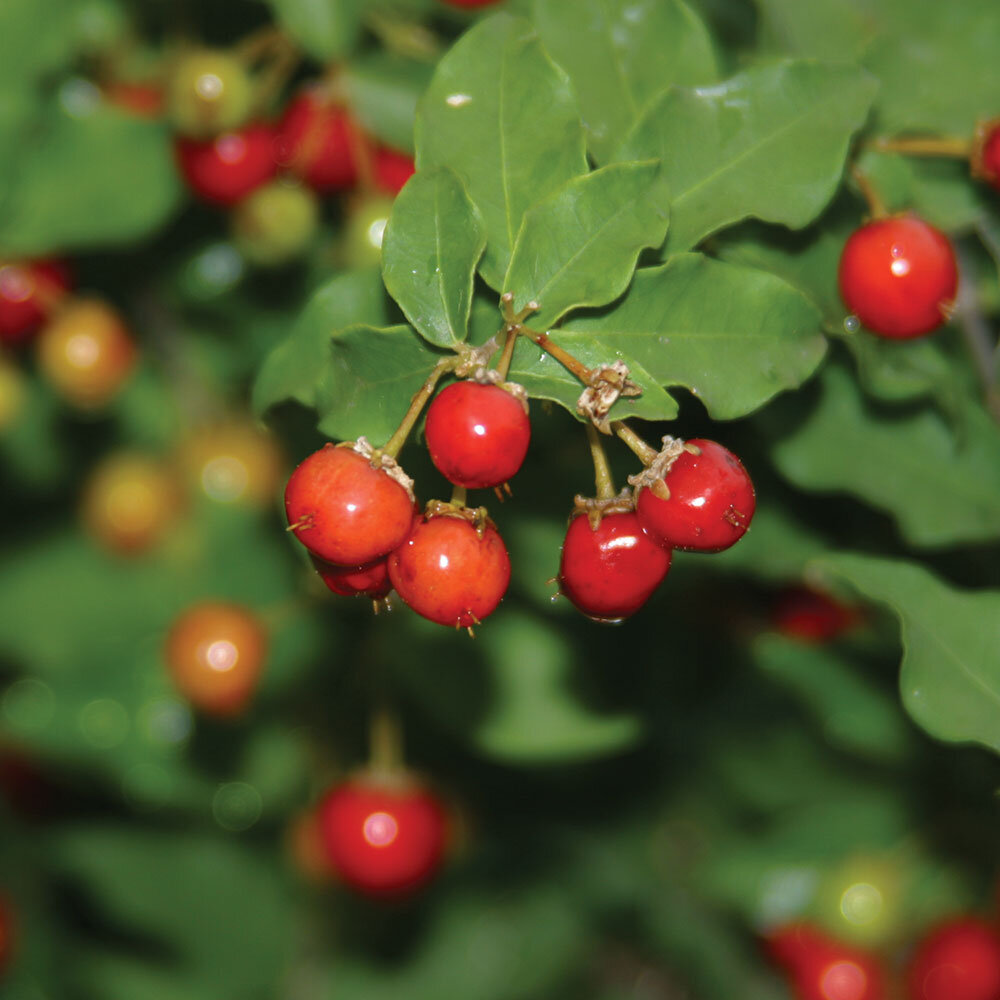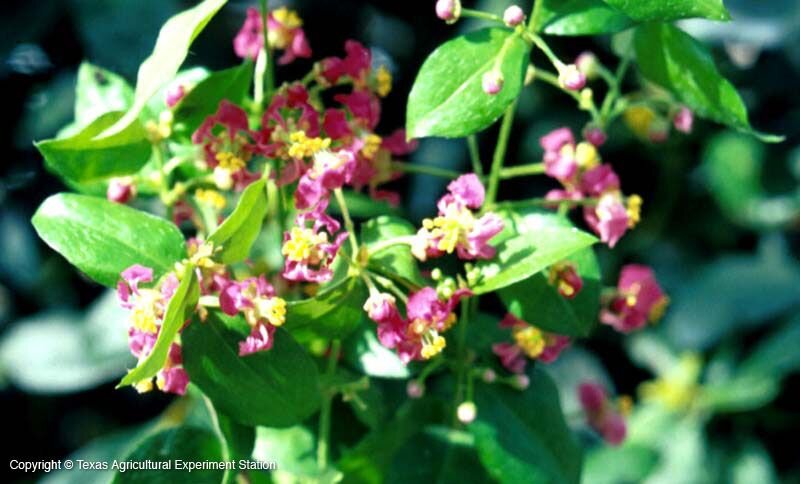Barbados Cherry
Tree Stories: Barbados Cherry will be Blooming Soon
After the quiet of winter, Island plants are taking advantage of warmer temperatures and sporting their spring finery. A beautiful bloomer is the Barbados cherry, also known as Wild Crapemyrtle, Acerola, or Manzanita. This is a small evergreen tree or shrub that blooms intermittently from spring through fall with delicate flowers resembling those of crapemyrtle. It is an increasingly common sight in Galveston. They aren’t yet blooming but will be soon.
There are two species commonly called Barbados cherry in the tropical Malpighiaceae family, M. emarginata and M. glabra. One can grow as tall at 20 feet, and the other closer to 9. The fruit of both is the tart Acerola cherry, which is a small round, bright red berry with juicy, acidic pulp that is high in vitamin C.
The species seen around the Island is the shorter version, bearing small bright green leaves year round in a thick, multi-trunked rounded canopy of delicate foliage. Profuse pink flowers rebloom repeatedly during the growing season, often appearing alongside the fruit. Within this species there are many size variations and some are small enough to be considered ground covers. It is native to Mexico southward, with a range into southernmost Texas and as far north at the Coastal Bend, so it is a near-native to us.
“Our” Barbados cherry will grow and fruit with minimal care. Its high heat tolerance and low water requirements make it perfect for our weather conditions. This small tree accepts a variety of soils and has good salt tolerance. It performs well in part shade. In most winters it is evergreen, but if harsh temperatures cause leaf drop, dead branches can be cut in spring and it will bounce back
The edible fruit is used for jams, jellies, juice, pies, and preserves, as well as flavoring for cocktails. The cherries have astringent, anti-inflammatory, stimulant, and diuretic properties and are used in the Tropics for a variety of medical treatments.
If you enjoy wildlife in your landscape, this is a tree for you. The flowers attract bees, butterflies, hummingbirds and other pollinators and the plant is the larval host for four species of native butterflies. The fruits are relished by birds.
Barbados cherry tree is a good choice for small landscapes as a trimmed screening hedge, in a patio garden, or an addition to a habitat garden. It is lovely as an accent tree or shrub, pot plant, ground cover, or mass planting. It accepts pruning to most any size or shape. The natural graceful arching branches are fine without pruning and can provide shelter to ground-covering plants and small pollinators.
You may grow your own Barbados cherry from seeds. It is quicker and easier buy one from your local nursery or raise one from softwood cuttings from a tree you admire and started in early summer. This is a perfect time to go find one at your local nursery--being sure to indicate the mature size you prefer--and plant it now. The birds, bees and butterflies will thank you.
Hurricane Ike caused the loss of 40,000 trees on Galveston Island. The Galveston Island Tree Conservancy was formed to address that loss and to date has replaced almost 20,000 through grant-funded plantings and giveaways, with more planned. “Tree Stories” is an ongoing series of articles intended to bring attention to outstanding Island trees and tree care. If you have or know of a special tree on Galveston Island that should be highlighted, please email treesforgalveston@gmail.com.
Margaret Canavan is a Galveston resident, a Certified Master Gardener, and a member of the Board of the Galveston Island Tree Conservancy.




